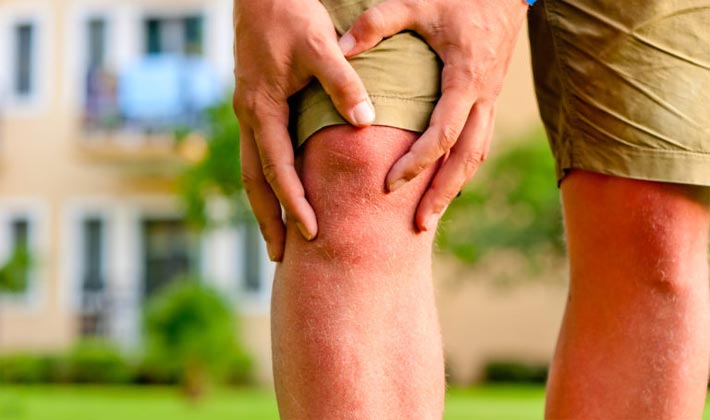
As Pedorthists, we see patients with all types of medical issues that affect the foot and ankle. Arthritis is one such condition that can create chronic pain and cause problems with walking, standing and balance. Although arthritis is common, affecting about 20 percent of Canadians over age 12, it is not a generally well understood condition. Many myths about arthritis exist, but it’s important to set the record straight so patients can be well informed about their health.
Here are some common myths that many Pedorthists have encountered in our clinics:
Myth #1: Arthritis is an “Old People” Disease
There is a common misconception out there that arthritis only affects older adults. While it is true that people aged 55 and over are four times more likely to have arthritis than younger people, arthritis can affect people of all ages. In fact, arthritis affects three of every 1,000 Canadian children, and three out of five Canadians diagnosed with arthritis are of working age.
Myth #2: There’s Only One Kind of Arthritis
This is simply not true. The term Arthritis is an umbrella term for more than 100 related diseases affecting joints, tissues, or even the entire body. Common forms of arthritis like osteoarthritis and rheumatoid arthritis are what most people think of when they hear of arthritis, but other common conditions such as gout and lupus are forms of arthritis that might not come to mind as often. Carpal tunnel syndrome is another condition related to arthritis, and can be caused by the stress of repetitive motion.
Myth #3: Arthritis Only Affects the Joints
Arthritis can affect much more than just the joints: muscles, tendons, connective tissue, bones and bursa (the fluid-filled sacs around joints). Lupus can also affect organ functioning. Living with the chronic pain of arthritis can also have a profound impact on one’s mental health, and can contribute to depression, anger, disrupted sleep, fever, unexplained weight loss, weakness as well as fatigue. See our blog article for more on Pedorthists and chronic pain.
Myth #4: Exercise Makes Arthritis Worse
Thanks to recent studies, it is now recognized that exercise is essential to manage chronic pain, including arthritis. It may seem counterintuitive, but lifting weights and performing weight-bearing activities on your arthritic joints can actually help. This is because these activities can build muscles, which supports and protects joints in the long run. The best way to exercise with arthritis is by participating in low-impact exercises that encourage range of motion like walking, yoga, tai chi or water aerobics. Talk to a health care professional about joint-friendly activities that suit your interests and abilities.
Myth #5: Arthritis Can’t be Prevented
We may not know everything about arthritis, but we do know that healthy lifestyle choices like proper diets, exercise and maintaining a healthy weight can help reduce the risk. Studies have shown that among women, having excess weight increases the risk of arthritis in the hips and hands, while in men it increases the risk of gout.
If you work behind a desk all day, or have a job that requires repetitive motions, you can take simple steps to avoid pain and inflammation in your joints, which could lead to arthritis. Take frequent breaks, get up and move around, use proper form when lifting or moving items, and make sure your workspace is set up in an ergonomic way. It is also important to wear proper footwear to improve shock absorption and reduce impact on the joints.
Myth #6: Medication is the Only Treatment for Arthritis
Many people suffering from osteoarthritis may take acetaminophen and non-steroidal anti-inflammatory drugs (NSAIDs) to reduce inflammation, but this isn’t the only way to manage one’s symptoms. Some try physical and occupational therapy, while others may have surgery to remove some or all of an affected joint.
When it comes to arthritis in the feet, ankles, knees and hips, Pedorthists can offer alternatives to medication to help improve mobility and flexibility in lower limb joints through the use of custom-made orthotics and footwear. Custom orthotics can improve the alignment of the lower body, reducing abnormal stresses on the joints. They can also provide optimal cushioning to improve shock absorption and reduce pressure on any painful areas of the feet. Footwear with a firm forefoot rocker sole is particularly beneficial for people with painful arthritis in the forefoot and toes, as it promotes forward motion during gait while limiting toe flexion and pressure on the forefoot.
If you suffer from arthritis, it is important to educate yourself on the condition and the myths surrounding it so you can manage your condition and live your life to the fullest. Talk to your health care provider and visit your local Pedorthist to discuss ways to improve your mobility and range of motion by using custom-made orthotics and footwear. Click here to locate a Pedorthist near you today.
By Heather Orosz, BSc, C. Ped (C)
References:
Dostal, E. (2012, March 9). 8 Myths About Arthritis—Busted! [Blog post]. Retrieved from https://www.prevention.com/health/g20482654/8-myths-about-arthritis-busted/
Loranger, L. (2014, September 1). 7 Common Arthritis Myths Busted [Blog post]. Retrieved from https://www.physiotherapyalberta.ca/public_and_patients/the_you_movement_blog/7_common_arthritis_myths_busted
Rogers, E. (2018, September 5). 8 Myths About Arthritis Debunked [Blog post]. Retrieved from http://www.everythingzoomer.com/health/longevity/2018/09/05/8-myths-about-arthritis/
Statistics Canada. (2017). Table 13-10-0096-06, Arthritis, by age group. Retrieved from https://www150.statcan.gc.ca/t1/tbl1/en/tv.action?pid=1310009606
